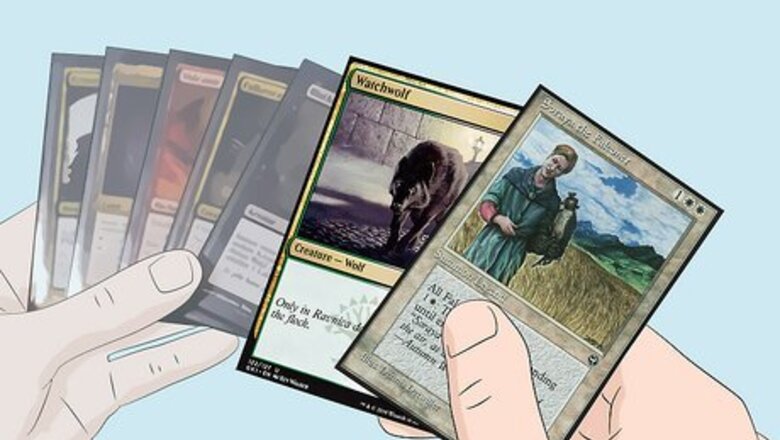
views
- Banding allows you to group any number of creatures with banding plus one non-banding creature together into a single “band.”
- Bands block and attack as a single unit, but the individual creatures are still separate cards for targeting purposes.
- Banding changes the way combat damage works. The creature with the band is given full priority to assign damage as they see fit.
How does banding work?
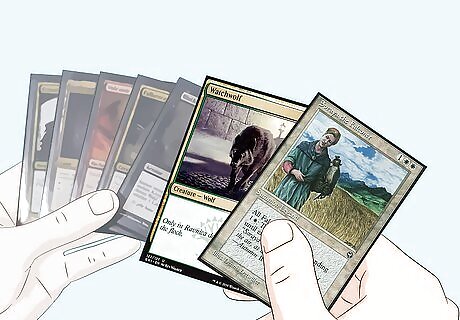
Banding changes the way damage is assigned in combat. A creature with banding can “team up” with one other creature that doesn’t have banding and/or multiple other creatures that do have banding to create a single “band.” Creatures in a band can attack and block together. When they do, the band’s controller gets to choose how combat damage is assigned to the opponent’s blockers or attackers. Normally, the attacking player always gets to choose how combat is assigned to multiple blockers. Banding turns that on its head if you use it to block. Banding works on both offense and defense. However, any bands you create on a given turn reset at the start of the next turn. In other words, your bands don’t carry over between turns. Part of the reason banding is so powerful (and so rare now) is that it makes doing combat math a nightmare for your opponent. One of the big misconceptions about banding is that the creatures in the band form one, big creature. They’re still different creatures when they’re in a band. Banding is primarily a white ability, although you do see it on a few red or colorless cards.
Example of a Band Blocking
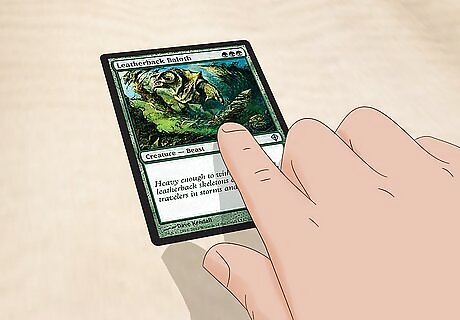
Your opponent declares attackers. So, let’s say your opponent attacks with a Leatherback Baloth, a green creature with a power and toughness of 4/5. Your opponent says, “Go to attacks,” you nod, and they tap the Baloth to indicate it’s attacking.

You declare you’re using banding. You must announce that you’re using Banding after your opponent declares attackers, but before blockers are declared. Just say “I’m using banding,” or something along those lines. Group any creatures you want to band together on the board. Here, let’s say you use Soraya the Falconer’s banding ability to create a band of Soraya and a Watchwolf. You can group any number of creatures together so long as they all have banding. Then, you get to include any one creature that does not have banding. You can create multiple bands if you have 4 or more creatures on the board and at least 2 of them have banding.

You assign your blockers. Place your blocks in front of your opponent’s attackers the same way you normally would. The only unique element here is that each band you’ve created can only block one creature—you cannot split the bands up once you’ve constructed them. Let’s say you put your band of Soraya and Watchwolf in front of your opponent’s Leatherback Baloth.
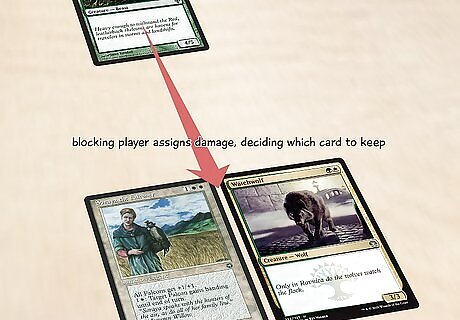
Damage is assigned by you. This is where banding really shines. Instead of the attacking player choosing where damage goes—which is what would normally happen—you do. So, Leatherback Baloth is a 4/5. You can choose to put 3 damage on Watchwolf (a 3/3) and 1 damage on Saraya (a 2/2), or 2 damage on Saraya and 2 damage on Watchwolf. Once you assign damage, combat takes place. In this scenario, you get to choose whether you keep your Watchwolf or Saraya while killing the Baloth.
What happens if a creature in a band is blocked?

The whole band is blocked and you assign damage as normal. Banding doesn’t really give you any massive advantage on offense the way it does on defense, but it’s still good. Creatures in a band all attack the same target and assign combat damage together. In other words, if the opponent blocks one creature in the band, they block them all. This may sound like a bad thing—you’re getting less damage through if your opponent blocks a band—but it’s a good way for you to take out big blockers using a bunch of smaller creatures. The attacking player normally controls how damage is assigned, so that part isn’t unique with banding.
Can a creature be in more than one band?
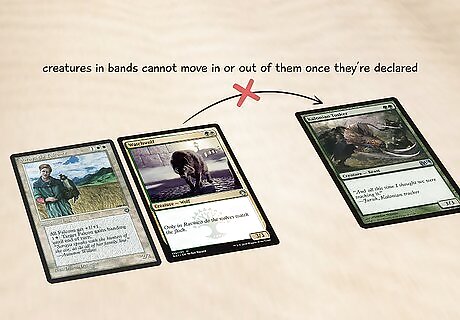
No, creatures can’t be in multiple bands. You can have as many different bands as you want so long as there are enough creatures to compose them, but creatures in bands cannot move in or out of them once they’re declared. The only way for a creature to be removed from a band is for it to be temporarily exiled (aka “blinked”) with a card like Flickerwisp.
Does banding stack?
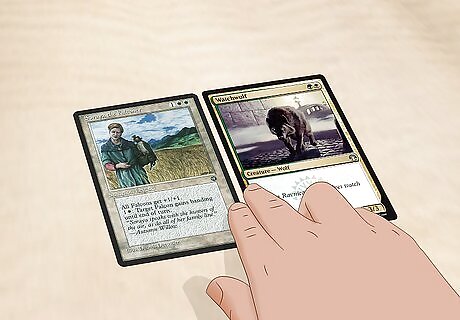
Technically, yes, but it won’t change anything. Once a player is in a band for a turn, that’s it. They can’t move to another band or drop out of the band. You are totally allowed to target a creature with another instance of banding, but it won’t actually do anything.
What is “band with others?”
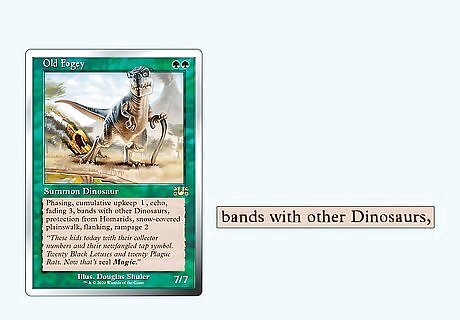
Band with others is a specialized type of banding. Creatures with “band with others” are only allowed to band with specific creature types (like Old Fogey, which only bands with dinosaurs). This text only appears on a handful of cards, and the card text will specify what can or can’t be banded with the creature in question.
Can banding stop trample?
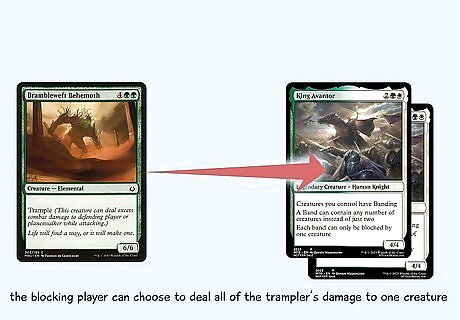
Yes, banding can be really irritating for tramplers. Trample will normally allow attacking players to “roll over” additional damage to the player they’re attacking. So, a 6/6 with trample being blocked by a 4/4 will have 2 damage left over to deal to the player. But since banding lets the blocking player choose where the damage goes, they can choose to deal all 6 of the trampler’s damage to the 4/4. Deathtouch works the same way. The player blocking with banding can choose to waste all of the deathtouch damage on one creature.
The History of Banding
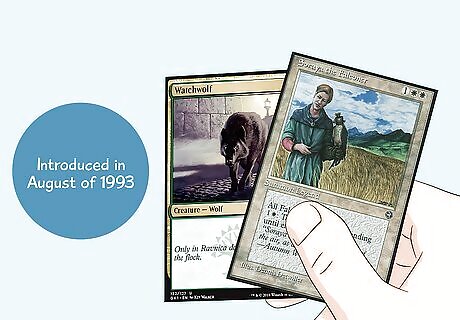
Banding is one of the oldest mechanics in Magic’s history. Magic: The Gathering was first introduced in August of 1993 with the Alpha set, and that’s when banding was introduced. Players quickly fell in love with Magic: The Gathering. Banding? Not so much. Players found it confusing and unfun, so the designers of Magic finally dropped the idea by the time Weatherlight came out in 1997. The other mechanics from Alpha were first strike, flying, landwalk, protection, regeneration, and trample. All of those see play today, with the exception of landwalk, which was just as unpopular as banding.
Does banding still exist?

No, Wizards of the Coast has abandoned banding. You can still play with cards that have banding in Legacy, Vintage, and Commander, but there are only 42 cards in the history of Magic with the word “banding” printed on it, and most of them aren’t very good compared to newer cards. You won’t see any new cards with banding and it’s unlikely you’ll run into it any time soon at your local card shop. Banding regularly makes the “top 10 worst mechanics of all time” and “worst MTG mechanics ever” lists.














Comments
0 comment